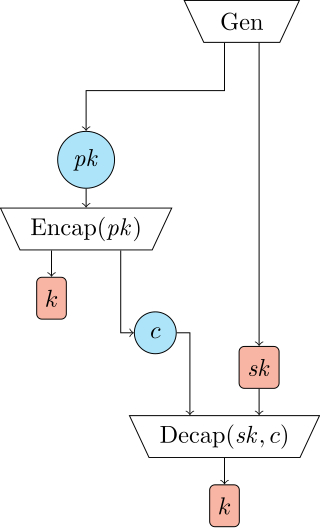This article needs additional citations for verification .(August 2024) |
| General | |
|---|---|
| Designers | Hitachi |
| First published | 1999 |
| Derived from | M6 |
| Cipher detail | |
| Block sizes | 64 bits |
| Structure | Feistel network |
| Rounds | Variable |
In cryptography, M8 is a block cipher designed by Hitachi in 1999. It is a modification of Hitachi's earlier M6 algorithm, designed for greater security and high performance in both hardware and 32-bit software implementations. M8 was registered by Hitachi in March 1999 as ISO/IEC 9979-0020. [1]
Contents
Like M6, M8 is a Feistel cipher with a block size of 64 bits. The round function can include 32-bit rotations, XORs, and modular addition, making it an early example of an ARX cipher.
The cipher features a variable number of rounds (any positive integer N), each of which has a structure determined by a round-specific "algorithm decision key". Making the rounds key-dependent is intended to make cryptanalysis more difficult (see FROG for a similar design philosophy).



















